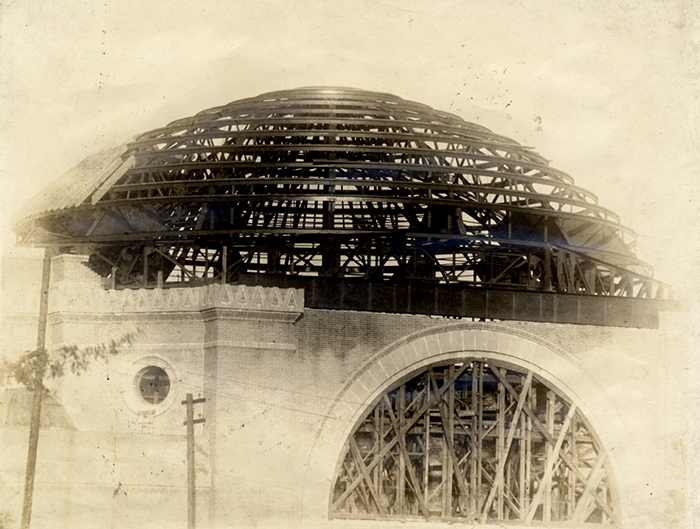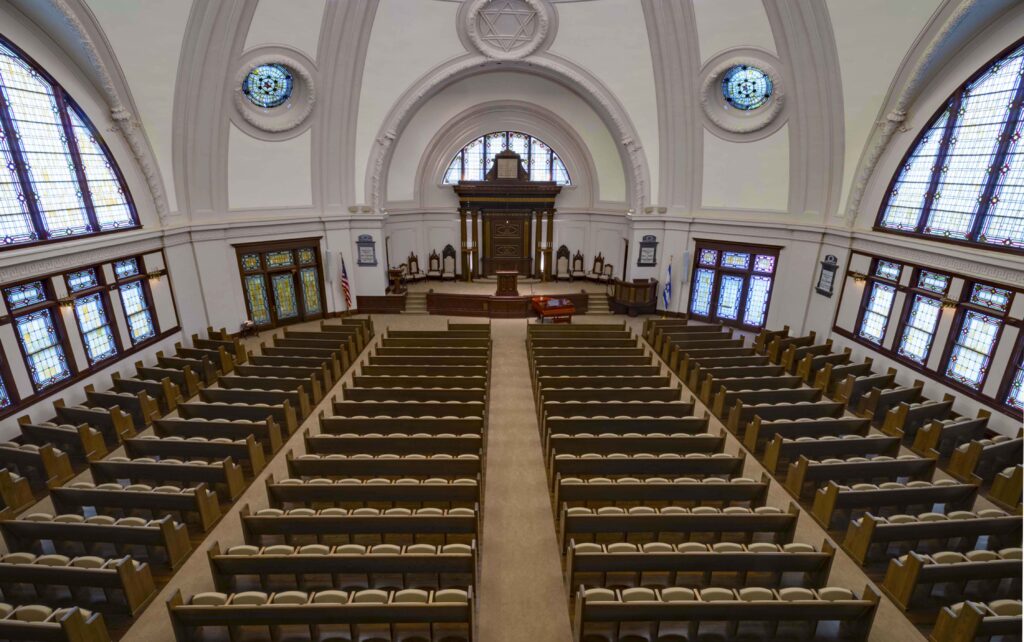Our Architectural History

Touro’s magnificent sanctuary is a Byzantine/Sullivanesque building designed by the renowned Emile Weil and constructed in 1908 and dedicated in 1909. The Byzantine and Moorish elements were a nod to Sephardic heritage and a differentiation from Christian buildings. Mr. Weil’s design of Touro was influential and fit firmly into the more modern stylistic movement; plans were published in a 1909 American Architect. The exterior is blonde brick with white terra-cotta decorative relief work and polychromed terracotta decorative detailing with a green-tiled dome. The sides and rear reflect a Sullivanesque flair; vast arched window bays mimic the curve of the dome, highlighted by multi-colored geometric art glass. The interior is dominated by a clear span dome, with no interior columns or supports. In contrast to the frequently dark and foreboding interiors of older synagogues, this open plan presents a light ethereal dimension providing clear views of the bima and the historic Ark (with pillars of cedar of Lebanon). The modern planning and exterior elevations offer a view into many religious structures in the United States, looking backward to Wright’s Unity Temple (1908) and forward to the Modernist churches of 1959’s Vatican II. Artifacts including the Aron Kodesh (Ark), donated in 1847, the Luria Torah, dating from 1812, and the “Holocaust Orphan” Torah donated in 1969 add to our history.

Nathan Kohlman designed the adjacent religious school building in 1928 in the same general style and using the same materials. Robert Schenker designed the 1963 multi-purpose, modernist-style addition. The Norman Synagogue House, designed by Mark Baum and Lyons and Hudson in 1989, is in a neutral late-20th century style using materials that blend with the original structure. In 2019, The Ira and Betty Kohn Foundation funded a restoration of the interior elements of the sanctuary in honor of Betty Kohn’s 95th birthday.
Touro Synagogue’s majestic buildings have been both a wellspring of and a sheltering magnet for diverse, reliable community leadership, engagement, and support throughout the generations.